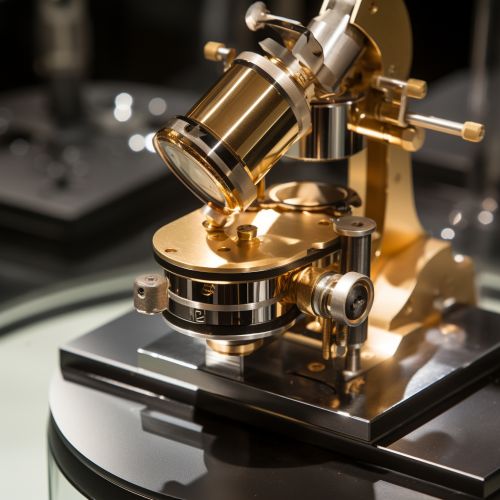Stochastic Optical Reconstruction Microscopy
Introduction
Stochastic Optical Reconstruction Microscopy (STORM) is a high-resolution imaging technique that belongs to the family of super-resolution microscopies. It is a fluorescence microscopy method that allows imaging of structures in the nanometer scale, far beyond the diffraction limit of light.


Principle of Operation
The principle of operation of STORM is based on the stochastic switching of fluorescence molecules between a bright (fluorescent) and a dark (non-fluorescent) state. This is achieved by using photoswitchable fluorophores that can be switched on and off by light of different wavelengths. In a typical STORM experiment, the sample is illuminated with a strong activation light that switches on only a sparse subset of the fluorophores. The positions of these fluorophores are then determined with nanometer precision by fitting their images with a point spread function (PSF). The fluorophores are then switched off by a readout light, and the process is repeated for a new subset of fluorophores. By repeating this process many times, a high-resolution image can be reconstructed from the positions of all the fluorophores.
Fluorophores in STORM
The choice of fluorophores is crucial for the performance of STORM. The fluorophores must be able to switch between a bright and a dark state, and they must be stable enough to undergo many switching cycles without bleaching. Several types of fluorophores have been used in STORM, including organic dyes, quantum dots, and genetically encoded fluorescent proteins. Each type of fluorophore has its own advantages and disadvantages, and the choice of fluorophore depends on the specific requirements of the experiment.
Applications of STORM
STORM has been used in a wide range of applications, from studying the structure of biological samples at the nanoscale, to investigating the dynamics of molecules in living cells. It has been used to image a variety of biological structures, such as the cytoskeleton, the nuclear pore complex, and synaptic vesicles. It has also been used to study the dynamics of protein-protein interactions, protein-DNA interactions, and protein-RNA interactions.
Advantages and Limitations of STORM
One of the main advantages of STORM is its high spatial resolution, which can be as high as 20 nanometers in the lateral direction and 50 nanometers in the axial direction. This allows imaging of structures that are too small to be resolved by conventional fluorescence microscopy.
However, STORM also has several limitations. One of the main limitations is the need for photoswitchable fluorophores, which can be difficult to incorporate into biological samples. Another limitation is the long acquisition time, which can be several minutes to hours depending on the complexity of the sample and the desired resolution. This makes it difficult to image dynamic processes in living cells. Furthermore, the interpretation of STORM images can be challenging due to the stochastic nature of the fluorophore switching.
Future Directions
Despite its limitations, STORM continues to be a powerful tool for imaging biological structures at the nanoscale. Future developments in STORM are likely to focus on improving the speed of image acquisition, expanding the palette of photoswitchable fluorophores, and developing new algorithms for image reconstruction and analysis.
